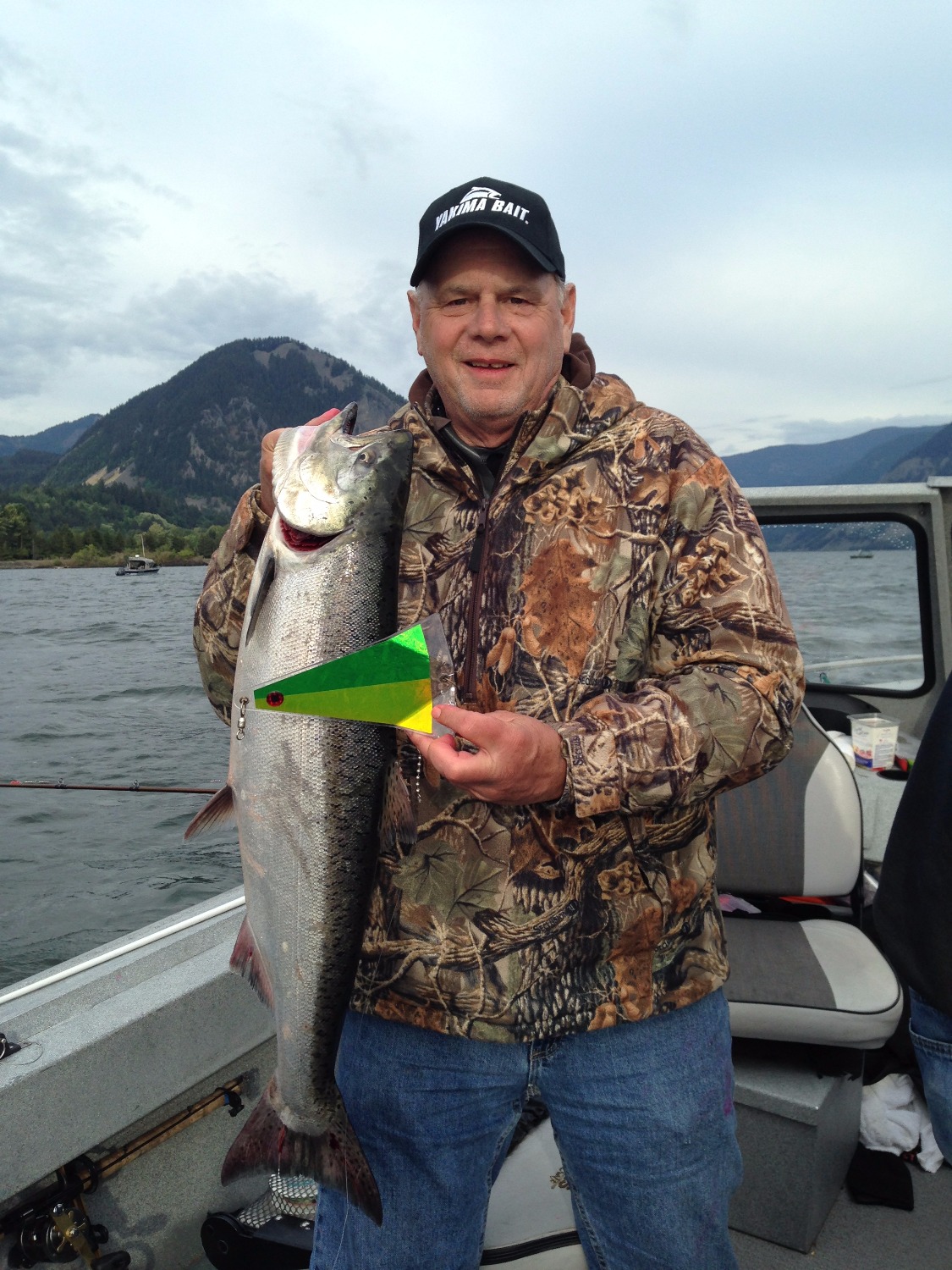Spring Chinook Dreams

This is the time of year when many a Northwest angler starts dreaming of catching one of the most coveted of all gamefish—the spring chinook salmon. Prized for its fighting capabilities and even more so for its beautiful red meat, the spring chinook season on the Columbia River, the Snake River and a number of other tributaries attracts tens of thousands of anglers.
With seasons open in early March in the lower Columbia River, and in mid-March farther upstream, anglers anxiously await the first of the returning salmon.
There are several different techniques for getting a springer to bite, depending on where in the river you are fishing.
Down low, many anglers will anchor up and drop a lure back into the current and let it work, waiting for the migrating fish to move upstream. Common lures for this type of fishing include the popular diving Mag Lip plug, wrapped with a small fillet of sardine or herring. More recently anglers have been wrapping a small slice of tuna belly on the belly of the Mag Lip to add scent and flavor to the plug.
From the banks of the Columbia, anglers for decades have “plunked” a Spin-N-Glo out into the current and wait for the fish to grab it. To rig for plunking, a fairly heavy weight (12-16 oz.) is tied to the end of the line, and the Spin-N-Glo (normally a size 2 or 4) tied on a three foot leader, is clipped on via a plug snap or snap swivel and sent down the main line. The technique is still as popular and productive as ever for springers.
Farther upriver on some of the tributaries lures and bait is trolled, both upstream and down, for the salmon.
Diving plugs like the Mag Lip and Fat Wigglers are always good in fluorescent red, orange, fire tiger or combination versions of metallic silver and chartreuse. The larger 4.5 Mag Lips have been good especially at Drano out in the lake, and the new smaller 4.0 Mag Lips should be perfect size for this type of fishing.
Prawn spinner rigs will also work well at both of these spots. Using a Toman Cascade style blade in red and white, or chartreuse and silver above five or six beads and the hook is the basic rigging. Rig the dyed prawn so that it is swimming backwards through the water. Some guides and anglers prefer to have a slow roll on their prawns, while others want them to have no roll at all.
If you are trolling a prawn spinner or a herring a 4 to 6-ounce dropper is needed to get the bait down fairly quickly. Drop the rig down and let the dropper bump bottom and then reel it up two or three turns. That should put you in the zone.
Trollers using bait will run their rigs about six feet behind a rotating flasher like a Fish Flash.
Spring is almost here, and that means the first chinook salmon of the year are starting to make their way up the Columbia and other Northwest rivers. Spring salmon are never easy, but if you stay out after them long enough, the chances of catching one of the hardest fighting and best eating fish around, are pretty good.
